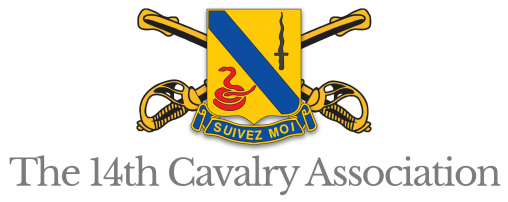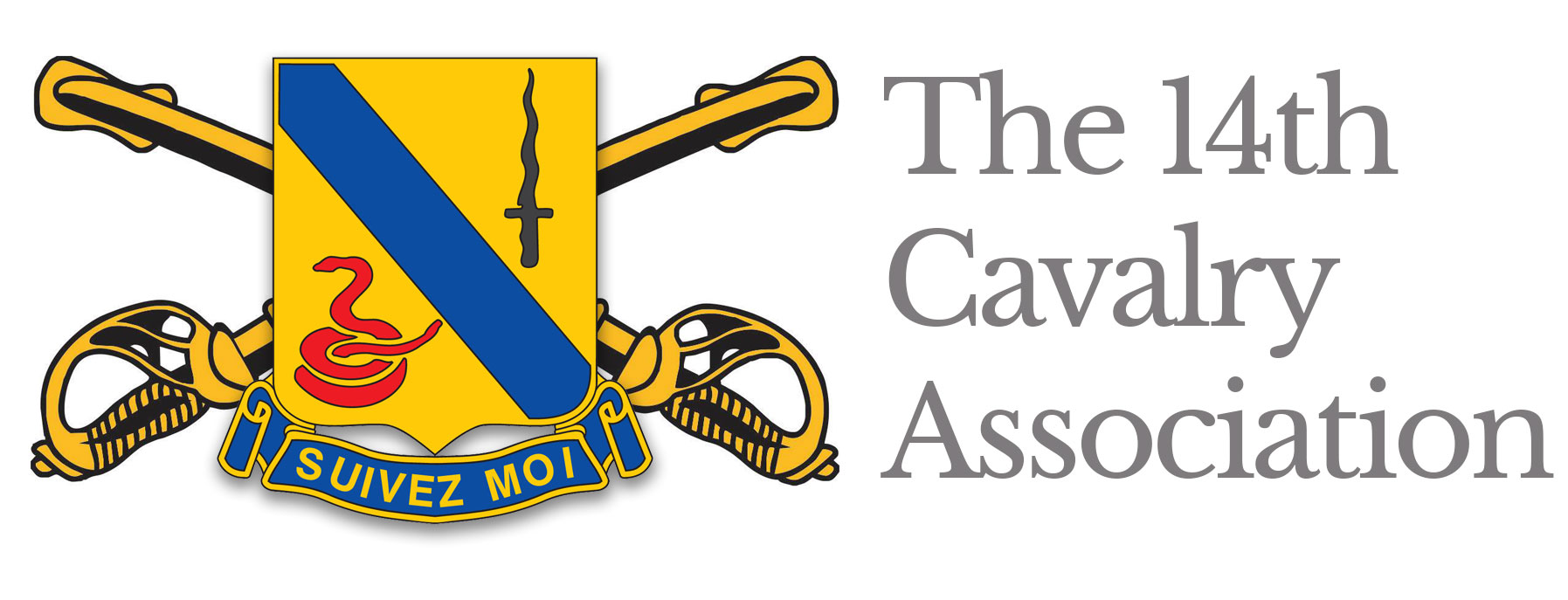Aviation and Artillery in the 14th Armored Cavalry Regiment
My tour of duty with the 14th Armored Cavalry Regiment (ACR) occurred between January 1960 and December 1962. Upon completing the Army Fixed Wing Course in November 1959, as a qualified Fixed Wing Pilot and First Lieutenant, I was assigned to the Aviation Section of Headquarters Company in the 3rd Battalion (later Squadron), at Bad Hersfeld.
The Aviation Section at that time had an L-19A fixed wing plane and an H-13H helicopter, was authorized 2 pilots, 2 crew chiefs, 1 crew chief’s helper/mechanic and a Staff Sgt (E-6) who served as our Operations Sgt, Maintenance Sgt, Cook and whatever other duties he could handle. Our primary mission was border observation, reconnaissance and surveillance of the battalion sector of the East-West German Border from Mannsbach to just north of the Hersfeld-Eisenach Autobahn to a Hill (Elevation 630, I seem to recall). We also had a 1/4 Ton Truck (Jeep), a 3/4 Ton Truck and a Gasoline Truck (Aviation 80 Octane Fuel).
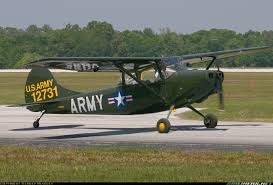
L-19 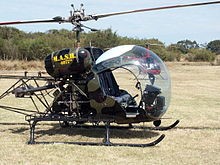
H-13
Aviation Operations
We were required to fly the entire length of the East-West Inter-zonal Border in the Squadron’s combat sector twice daily, weather permitting. Our flight minimums for fixed wing was 0 (zero) ceiling, one mile visibility and for rotary wing 0 ceiling,1/2 mile visibility, which meant that requirement was fairly easy to meet unless the weather was really nasty. We reported any sighted activity by personnel and/or vehicles and particularly noted any changes throughout the environment from day to day. Once we entered the 5K (kilometer) Zone of our border sector, the airspace was “ours” from the ground to the base of the Frankfurt-Berlin Flight Corridor, which I recall limited us to 3,000 feet indicated altitude with the current barometer setting. All “Border Pilots” were required to memorize the border sector and all of the terrain between the airfield and any portion of the border so that flights could be maintained under the most minimal weather conditions.
After the Berlin Wall was built in August 1961 and the “Wall” was constructed throughout the border sectors, flight minimums were changed to 0-1/2 mile for fixed wing and 0-1/4 for rotary wing. We also started flying further north along the border to the vicinity of Witzenhausen east of Kassel. The L-19 was the primary aircraft used for flying the border because of its range and slow flight capability. The H-13H was used more to check out pin point locations which often called for landing anywhere along the border. We frequently also extended the range of the H-13H by strapping two 5-gallon cans of gasoline on the skids.
A “Border Pilot” in those days had one of the most exciting jobs available during the “Cold War” situation because once we were “border qualified” (usually after about 30 days of intensive training flights with another border pilot) we were trusted in our ability to read a map and were permitted to fly almost anywhere at any time within the Air Defense Identification Zone (ADIZ) within West Germany. We could also see and direct others to points of interest that they might not readily pick up from their locations on the ground. We also trained all of the battalion’s aerial observers who were in our back seat or right seat, as applicable, on most flights. Among those observers were the Bn S-2, the Asst S-2, an Asst S-3, the Liaison Officer and at least one Forward Observer from the Howitzer Company (later Battery). We also supported the battalion field exercises in the Fulda Training Area, Wildflecken and Grafenwoehr Training Area. There was also a semi-annual exercise in the battalion/squadron (Operation Saber-Drill as I recall) fighting mission for screening and delay from the border to a passage of lines at the Fulda River. The L-19 also had a secondary mission of providing “cover” and radio relay in the event of a Non-Combatant Evacuation Order (NEO) from Bad Hersfeld to a release location to be determined somewhere in France.
Most fixed wing flights along the border trace were conducted at 500 feet altitude and 500 feet from the border itself with “buzz jobs” or slow flight at lower altitude to check out any specific areas.
Our low level training area was the Fulda River valley between Bad Hersfeld and Fulda. We flew the entire width of the valley along the river and learned every “nook and cranny” of that 15-20 minute flight (we did not fly under any bridges or power lines).
Our 2,200 foot runway at Werve-Thompson Army Air Field at Bad Hersfeld was at 920 feet in elevation at midpoint in front of our operations office in the hangar. It was 80 feet lower at the north end than at the south end. We could take off to the north starting at about 960 feet, drop immediately into the Fulda River valley and fly “up” to the Fulda Army Air Field (AAF) at 1,000 feet elevation, lower 45 degrees of flaps and land short on the 600 foot sod North-South runway if we had about 10 knots of headwind from the south. The East-West runway was the standard AAF length of 2,200 feet, but required circling to land…with a left or right base into the wind…and then a 10-knot crosswind on the landing.
After a thorough ground reconnaissance using the helicopter and then running the gasoline truck up and down the selected landing “strip” to smooth out the “mole holes” and other small irregularities, we used several unimproved field strips with the fixed wing L-19 during training exercises in the Fulda Training Area. Although we used this type of field operation quite successfully, other flight detachments were not as successful, so we were no longer permitted to operate from unimproved field strips. But our war plans included several stretches of the Hersfeld-Eisenach Autobahn that could be used for runways for fixed wing aircraft, but we were never permitted to “test” them.
Training
In the Spring of 1960 after the Winter Shield I Exercise, the 14th Cavalry Regiment “hosted” a training team of several H-13H helicopters from Fort Carson, Colorado, in an “Air Cavalry” operation “experiment.” Our border sector was chosen for the training on the actual border trace, and as a fixed wing only pilot, I spent a lot of time in the right seat of the lead H-13H as the “safety” pilot to avoid any possible border over-flight. These helicopters were all fully equipped with 30 caliber machine guns mounted on both skids and created a lot of excitement on the border for a few days with the East German Border Security Police (BSP), and we were sure, a few Russian headquarters personnel who apparently remained inland at the East German Eisenach Training Area-Bad Salzungen Complex. This team was also working on a low level “side flair” autorotation in case of engine failure to avoid the exposure to enemy fire by using the pop-up” technique which was the “approved solution” during non-hostile situations. I was always on the “low side” of these simulated emergencies as well, as the pilot for some reason appeared to like being “on top” of things. But while the team was with us, I also got a lot of “stick time” and would have been ahead of the game for a rotary wing qualification course had I had the opportunity.
Reorganization
In May 1960 the 14th Armored Cavalry Regiment was reorganized. The Battalions became Squadrons, the Companies became Troops, the Howitzer Companies became Batteries, and the Aviation Company was added to the Regimental Headquarters Troops (or Provisional Squadron) replacing the small Regimental Aviation Section that had formerly existed in addition to the three Aviation Sections at the battalion locations in Bad Hersfeld, Bad Kissingen and Fulda.
The colors of the Regimental guidons changed from Green and Gold to Red and White. And the Artillery Batteries (and most of the assigned pilots at that time) were “permitted to wear their own Artillery brass and Red neck scarves rather than having to wear Armor brass and yellow neck scarves. The personnel in the former Aviation Sections were reassigned to the Aviation Company at Regimental Headquarters in Fulda and assigned for duty with the “Flight Detachment” at each respective Squadron. Thus the Aviation Company at the Fulda AAF actually increased significantly in numbers of personnel and aircraft.
Artillery
After almost a year and a half with the Flight Detachment, I volunteered for a ground duty assignment with the Howitzer Battery of the 3rd Reconnaissance Squadron in Bad Hersfeld and was reassigned in May 1961. During the next 19 months I was fortunate to gain a full range of experience as a Forward Observer (including a Battery Annual Test), Fire Direction Officer (supporting the Squadron in their Tank Gunnery Exercises and Annual Test at Grafenwöhr Training Area, particularly during the night firing phase under our illumination), and as Executive Officer (XO) (including a Battery Annual Test and training the Squadron Mortar Sections for their annual test).
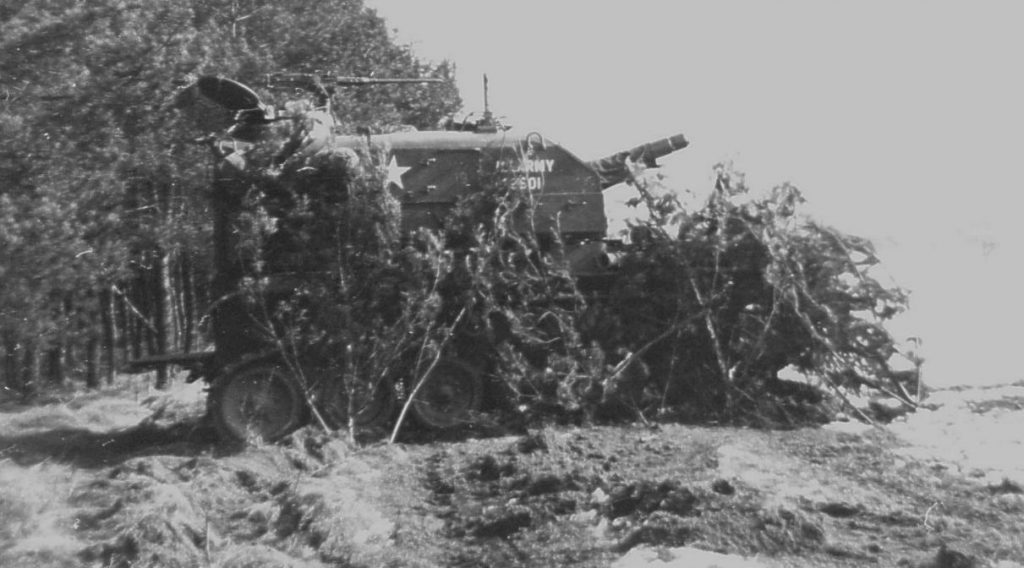
In the interest of maintaining as much continuous fire on a target area as possible, the squadron’s Howitzer Battery–of five 105 millimeter self-propelled howitzers–frequently used a “roving gun” on the advanced party with the Recon & Survey Officer and his section and as soon as that gun was in a favorable position, the piece would be laid and “registered” on the axis of advance or delay. Then the battery executive officer would
move forward (or rearward) with two more guns and join that gun as a platoon. Our Fire Direction Center was in a tracked troop carrier; it would remain in place with the other platoon of three guns (often firing at a target) so that we could employ the “split battery” to maintain fire on a target while moving the entire battery to our next position. Our Battery Commander at the time was Bill LaComb, who was promoted to Captain “on time” had 60 months experience in grade as a 1st Lieutenant.
As the Armored Cavalry Regiments claimed to be the “total package” for the training of Armor officers and soldiers, my 36 months with the Aviation Section/Flight Detachment and Howitzer Battery proved to be an invaluable experience for me as an Artillery Officer and Army Aviator. As promotions were accelerated in 1962, I was promoted to Captain while in the position as XO of Howitzer Battery in October 1962, about six weeks prior to leaving Germany to attend the Artillery Officer Career Course at Fort Sill, Oklahoma.
Gene Wilson, Captain
Headquarters and Headquarters Company, Aviation Troop, and Howitzer Battery
3rd Squadron, 14th ACR
January 1960-1962
Retired as a Colonel
